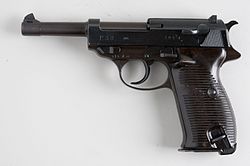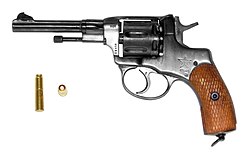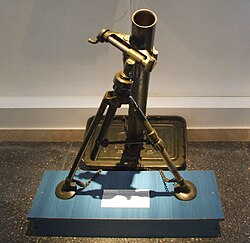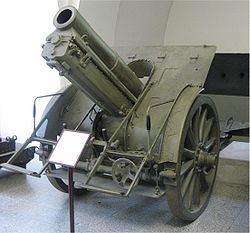Local equipment
This includes only locally designed and produced equipment.
Combat vehicles
Aircraft



All of the aircraft listed below were completed before the end of World War II. Prototypes are omitted from the list. Unless specified otherwise, all aircraft machine guns have the caliber of 7.92 mm. All of the data is sourced from: [1]

| Model | Type | Number | Armament |
|---|---|---|---|
| SET 7K | Training, communication, observation | 20 | 2 x Lewis guns (twin mount) |
| SET 7KB | Reconnaissance and observation | 20 | 2 x Lewis guns (twin mount) 1 x Vickers machine gun 6 x 12 kg bombs |
| SET 7KD | Communication | 20 | 1 x Lewis gun |
| IAR 37 | Light bomber | 50 | 4 x Browning machine guns 12 x 50 kg bombs |
| IAR 38 | Reconnaissance and artillery spotting | 75 | 3 x Browning machine guns 24 x 12 kg bombs |
| IAR 39 | Reconnaissance and light bomber | 255 | 3 x Browning machine guns 24 x 12 kg bombs |
| IAR 80 | Fighter | 49 | 4 x FN Browning machine guns |
| IAR 80A | Fighter | 85 | 6 x FN Browning machine guns |
| IAR 80B | Fighter | 55 | 2 x 13.2 mm FN Browning heavy machine guns 4 x FN Browning machine guns |
| IAR 80C | Fighter | 60 | 2 x 20 mm Ikaria autocannons 4 x FN Browning machine guns |
| IAR 81 | Fighter and dive bomber | 50 | 6 x FN Browning machine guns (4 for 10 of them) 2 x 13.2 mm FN Browning heavy machine gun (10 of them) 1 x 225 bomb 2 x 50 kg bombs |
| IAR 81C | Fighter | 150 | 2 x 20 mm MG 151 autocannons 2 x FN Browning machine guns Werfer-Granate 21 (1) |
| JRS-79B | Bomber | 36 | 5 x machine guns 1,575 kg of bombs |
| JRS-79B1 | Bomber | 31 | 1 x 20 mm Ikaria autocannon 7 x machine guns 1,400 kg of bombs |
Armored fighting vehicles



All of the data is sourced from: [2]
| Model | Type | Number | Armament |
|---|---|---|---|
| TACAM T-60 | Tank destroyer | 34 converted from captured | 1 x 76.2 mm M-1936 F-22 1 x 7.92 mm ZB-53 machine gun 1 x submachine gun |
| TACAM R-2 | Tank destroyer | 21 converted from | 1 x 76.2 mm M-1936 F-22 (1) 1 x 76.2 mm ZIS-3 (20) 1 x 7.92 mm ZB-53 machine gun |
| Vânătorul de care R35 | Tank destroyer/light tank | 30 converted from R35s | 1 x 45 mm 20K mod. 1932–34 tank gun |
| Mareșal | Tank destroyer | 6 prototypes | 1 x 122 mm M1910/30 howitzer (4) 1 x 75 mm DT-UDR (2) 1 x 7.92 mm ZB-53 machine gun |
Warships

Data for the monitors sourced from: [3] and for the rest of the warships from: [4]
| Class | Type | Ships | Armament (artillery, torpedoes, mines) |
|---|---|---|---|
| Brătianu-class | River monitor | Ion C. Brătianu Alexandru Lahovari Lascăr Catargiu Mihail Kogălniceanu | 3 x 120 mm naval guns 1 x 76 mm AA gun 2 x 47 mm light naval guns |
| Amiral Murgescu | Minelayer and escort | Amiral Murgescu | 2 x 105 mm naval/AA guns 2 x 37 mm AA guns 4 x 20 mm AA guns 135 x mines |
| Marsuinul | Submarine | Marsuinul | 1 x 105 mm deck gun 1 x 37 mm AA gun 6 x 533 mm torpedo tubes |
| Rechinul | Submarine | Rechinul | 1 x 20 mm AA 4 x 533 mm torpedo tubes 40 x mines |
Individual weapons

| Model | Type | Number | Notes |
|---|---|---|---|
| Orița M1941 | submachine gun | 6,000 | Number produced until October 1943 [5] |
| Argeș | flamethrower | ||
| 15.2 mm Model 1943 | anti-tank rifle | 1 | Prototype made in 1943 [5] |
Artillery

| Model | Type | Number | Notes |
|---|---|---|---|
| 75 mm Reșița Model 1943 | field/anti-tank gun | 375 | Number produced until December 1944 (including 3 prototypes) [6] |
| 120 mm Reșița Model 1942 | mortar | 12+ | Number produced until 1944 [7] |
Other

- Bungescu AA fire director [5]
- Costinescu 6.6 kg 75 mm armor-piercing shell [8]
- T-1 tractor – 5 prototypes [5]
Table of orders and deliveries for the land forces

Data from: [9]
| Model | Type | Numbers ordered | Numbers produced | Percentage produced from the order |
|---|---|---|---|---|
| Orița M1941 | Submachine gun | 45,000 | 6,000 (Oct. 1943) | 13.3% |
| 75 mm Reșița Model 1943 | Field/anti-tank gun | 1,100 | 375 (Dec. 1944) | 34% |
| Malaxa UE carrier | Artillery tractor | 300 | 126 | 42% |
| TACAM T-60 | Tank destroyer | 34 | 34 converted | 100% |
| TACAM R-2 | Tank destroyer | 40 | 21 converted | 52.5% |
| Vânătorul de care R35 | Tank destroyer/light tank | 30 | 30 converted | 100% |
| Mareșal | Tank destroyer | 1,000 | 6 prototypes | 0.6% |
| T-1 tractor | Artillery tractor | 1,000 | 5 prototypes | 0.5% |





























































































